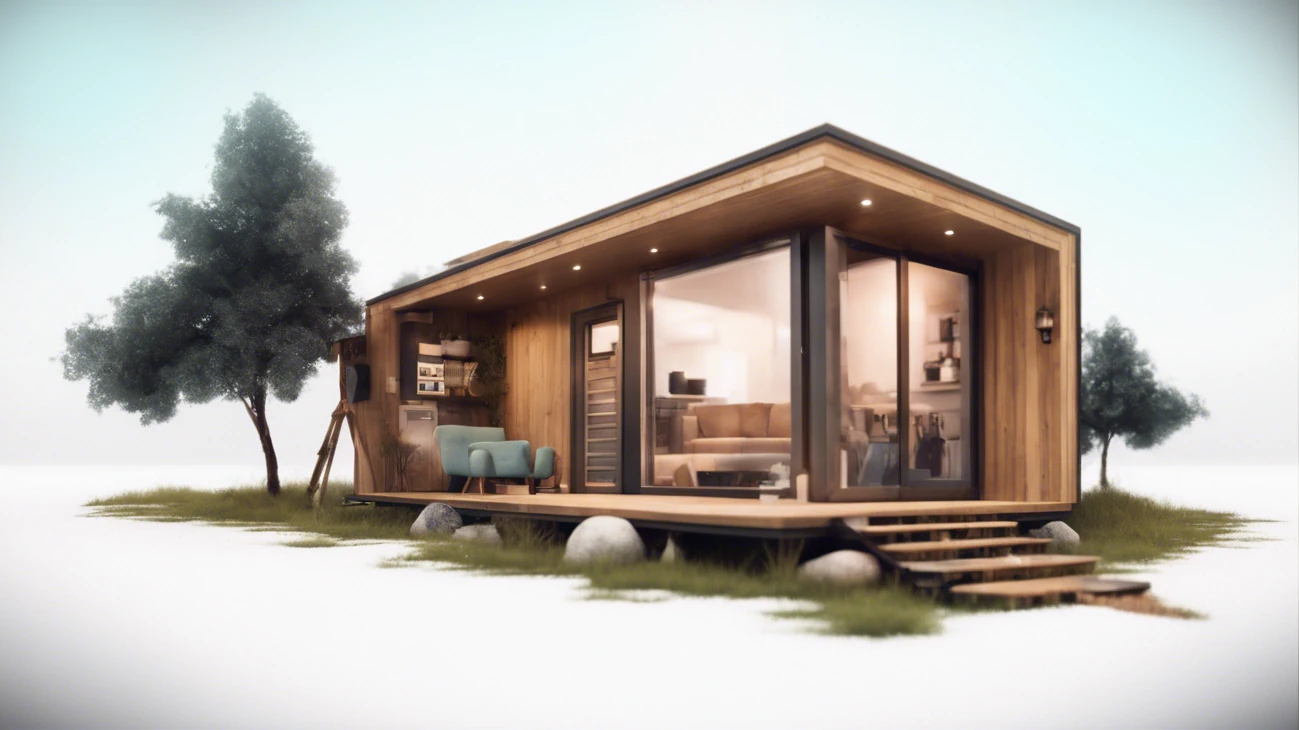Evolution and origins
The origin of Tiny Houses can be traced back to the 1850s, when Americans began building smaller, portable log cabins as they explored the West and sought new opportunities in rural areas. These cabins were born out of necessity, owing to limited space and resources, and served as the forerunner to the minimalist mobile homes that we know today as Tiny Houses.
The trend of living in mobile homes gained momentum in the 1920s when Henry Ford introduced his "Fordson House Car," which was essentially a house on wheels built in the same factories as his cars. Other manufacturers followed suit, and mobile homes became a popular and affordable alternative to conventional housing. While the popularity of Tiny Houses declined in the 1970s, it resurfaced in the 1990s due to growing environmental awareness and the need for more affordable and sustainable housing. The trend picked up further momentum after the 2008 financial crisis, which left many people homeless and searching for practical and economical housing options.
Today, the Tiny House movement is experiencing a renaissance, with a rising demand for affordable, sustainable, and customizable homes. Designers and builders are creating innovative and eco-friendly models of Tiny Houses, which can be designed for permanent or temporary living, on wheels or on fixed foundations. The Tiny House presents a viable alternative to conventional housing, promoting a simpler and more conscious way of life that emphasizes sustainability and minimalism.
Types of tiny houses
There are various types of tiny houses, which adapt to different needs and preferences of the owners.
- Tiny houses on wheels: They are the most common and popular. They are built on a trailer and can be transported to different locations. They usually have a size between 10 and 40 square meters.
- Tiny houses on foundations: They are tiny houses built on a fixed base. These homes are not mobile homes, but may be larger and have more amenities.
- Tiny floating houses: These are tiny houses built on rafts, barges or pontoons that can move through the water. They are ideal for those who want to live near the water or who want a different life experience.
- Micro apartments: They are small apartments or studios of less than 40 square meters, designed to maximize space and functionality.
- Garden houses: They are small houses that are built in the garden of a main house. They can be used as guest space, offices, studios, among others.
- Tiny houses on Shipping containers: This typology is known as "Container homes". Shipping containers are prefabricated structures that offer a quick and inexpensive solution for building small, sustainable homes.
Construction materials
The choice of materials will depend on the design, the budget and the specific needs of the construction of each Tiny House.
Advantages and disadvantages
Each of these types of tiny houses has its own advantages and disadvantages, and can be designed and adapted to meet the specific needs of each owner. They can vary according to the type of Tiny House and the needs and preferences of each person.
Advantages
- Lower environmental impact: Their size reduces the consumption of energy, water and construction materials, which makes them more sustainable.
- Increased mobility and flexibility: Tiny Houses on wheels can be moved to different locations, making it easier and faster to change residences.
- Lower cost: The reduced size of the house and the possibility of building it with cheap materials, make its cost less than that of a traditional house.
- Financial freedom: The lower cost and the possibility of having a more affordable mortgage allow its inhabitants to have greater financial freedom and less debt.
- Simpler and more minimalist lifestyle: By reducing space, a simpler and more conscious lifestyle is encouraged, in which the essential is valued and the superfluous is dispensed with.
Disadvantages
- Space constraints: The small size can be a challenge for some people, especially families with children or pets.
- Legal restrictions: In some places, Tiny Houses may not be legally recognized as permanent housing and may face legal restrictions.
- Less amenities: Tiny Houses often have fewer amenities and space than a traditional house, which can be a problem for some people.
- It requires an adaptation: Living in a Tiny House requires a change of mentality and habits, so it is not an option for everyone.
- Layout constraints: Small footprint can also constrain the layout and layout of the space, which can be a challenge for some designers and builders.
We will address these topics in more detail on this website, I hope you like it!
Are you still interested in this topic?
A good idea is to continue here:

